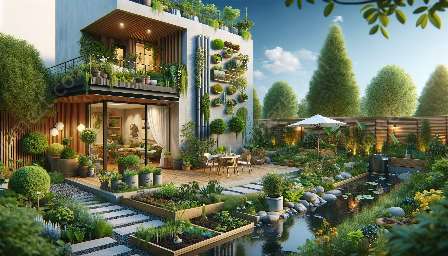Permaculture is not just about sustainable gardening and design, it is also deeply rooted in fostering community and connectivity. Building a permaculture community revolves around the principles of sustainable living, shared resources, and creating resilient neighborhoods. In this guide, we will explore the ways in which permaculture and community building intersect, and how yard and patio spaces can play a crucial role in nurturing a strong and connected community.
The Basics of Permaculture
Permaculture is a holistic approach to living that encompasses sustainable design, ethical principles, and regenerative practices. It seeks to mimic natural ecosystems and leverage the interconnections between various elements to create resilient, productive, and harmonious systems. Permaculture principles include observing and learning from nature, valuing diversity, utilizing renewable resources, and caring for the earth and its inhabitants.
Permaculture and Community Building
At its core, permaculture is about creating sustainable and self-sufficient communities. By integrating permaculture principles into community building, neighborhoods can become more resilient, resourceful, and interconnected. This involves fostering a sense of shared responsibility for the environment, promoting local food production, and establishing systems for sustainable living.
Creating Shared Spaces
Yards and patios are ideal spaces for bringing communities together. By designing these areas with permaculture principles in mind, such as incorporating edible landscapes, communal gardens, and water catchment systems, they can become hubs for social interaction and collaboration. These shared spaces encourage residents to engage with nature, connect with each other, and participate in sustainable practices.
Engaging the Community
Community building in the context of permaculture involves engaging residents in decision-making processes, empowering them to take ownership of communal spaces, and fostering a culture of sharing resources and knowledge. By organizing workshops, volunteer days, and educational events focused on permaculture, community members can learn, collaborate, and bond over eco-friendly practices.
Creating Eco-Friendly Neighborhoods
Permaculture-based community building prioritizes environmental sustainability and aims to reduce the ecological footprint of neighborhoods. Through initiatives such as community composting, rainwater harvesting, and renewable energy adoption, communities can significantly decrease their impact on the environment and become models of sustainable living.
Building Resilience
One of the key goals of permaculture community building is to create resilient neighborhoods that can withstand environmental challenges and disruptions. By promoting food sovereignty, implementing regenerative land management practices, and fostering a culture of mutual support, communities can enhance their ability to adapt and thrive in the face of change.
Benefits of Permaculture Community Building
The benefits of permaculture community building extend beyond environmental sustainability. Strong community bonds, increased self-sufficiency, and a sense of belonging contribute to improved mental and emotional well-being. Additionally, the sharing of resources, knowledge, and skills within the community leads to a more cohesive and resilient neighborhood.
Conclusion
Permaculture community building offers a powerful framework for creating sustainable, connected, and resilient neighborhoods. By integrating permaculture principles into community development and leveraging yard and patio spaces as focal points for social interaction and sustainable practices, individuals can foster a sense of belonging and environmental stewardship in their communities. Embracing permaculture principles in community building is not only beneficial for the environment but also for the well-being and vitality of the people who inhabit these spaces.


